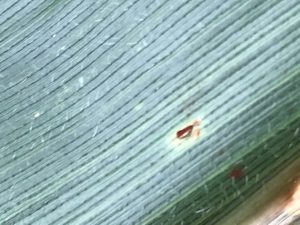Common rust on corn- a concern?
Over the past week there has not been much activity as far as corn disease is concerned. The only exception has been the detection of very light common rust infections on some corn in the north central and southern parts of the state. Although the occurrence of common rust on corn this early in development may be a concern to some, there are a few things that you should keep in mind.
1) Common rust, caused by Puccinia sorghi, is an obligate pathogen and requires living hosts to grow and reproduce. It blows into Illinois from other regions each season. It does not overwinter in Illinois.
2) Common rust is a disease that can be problematic during exceptionally cool and wet summers. Disease development occurs between 60-74F. When temperatures exceed 74 F disease progress slows and pustules may cease being active.
3) The amount of pustules needed to cause yield loss by common rust is high. Consider that it takes over 160 pustules on a leaf to equal 1% severity.

With temperatures increasing, common rust likely should not be on the top of your diseases to be concerned about list. That doesn’t mean you should not be scouting and paying attention to the situation in your fields. Scout often, and be thorough. One thing we do not want to miss is the occurance of southern rust, which is starting up in Georgia and Louisiana.
One disease I would like people to keep an eye out is bacterial leaf streak on corn. We have had this disease in Northern Illinois for a few years now, and it likely is much more widespread than we think. This disease is most likely to occur in no-till, corn on corn production systems and wet conditions (just like what we have had the past several weeks). We have had several putative images over the past 10 days. If you see anything that might be bacterial leaf streak please send to the UIUC Plant Diagnostic Clinic for assessment. Feel free to text me images or email images as well.
For more information on bacterial leaf streak, click here.





